
Roots
The rhythm of our days, often marked by the rise and fall of the sun, holds a quiet sway over the intricate biological choreography within us. Our coils, those wondrous expressions of heritage and identity, respond to these deep, inherent patterns. When the natural cadence of rest is disturbed, when sleep becomes a fractured landscape rather than a restorative sanctuary, the delicate systems governing our strands begin to falter.
This is not a simple matter of feeling tired; it extends into the very cellular processes that sustain healthy hair. We look to the foundational mechanisms, the silent cellular conversations, that link a restless night to a shedding coil, understanding that our hair’s vitality is deeply rooted in the body’s internal rhythms.

The Hair’s Own Cycle
Each strand upon our head lives a life of its own, cycling through distinct phases ❉ a period of active growth, a brief transition, and a quiet rest before making way for new beginnings. This cyclical existence is a marvel of biological engineering, with the hair follicle acting as a mini-organ, orchestrating these changes with remarkable precision. The primary phases include the Anagen Phase, where hair actively grows for several years; the Catagen Phase, a short transitional period of regression; and the Telogen Phase, a resting period after which the hair sheds. Following the telogen phase, the follicle typically re-enters anagen, starting the process anew.
The human hair follicle, a tiny organ, guides each strand through distinct growth, transition, and resting periods.
Under normal circumstances, a significant majority of our hair, perhaps 85-90%, resides in the active anagen phase. Only a small percentage, around 10-14%, rests in telogen, ready to shed, and an even smaller fraction, 1-2%, is in the brief catagen transition. This balance ensures a steady density of hair, with new growth consistently replacing shed strands. When this delicate balance shifts, even slightly, noticeable shedding can occur.

The Body’s Internal Clock
Our internal biological clock, often termed the Circadian Rhythm, regulates nearly every physiological process, from hormone release to cell regeneration. This 24-hour cycle is profoundly influenced by light and darkness, signaling to our bodies when to be alert and when to seek repose. Sleep, a fundamental component of this rhythm, is a time of intense cellular repair and regeneration. During periods of deep rest, the body is busy with maintenance tasks, including the production of vital hormones and the repair of cells, even those within the hair follicles.
Disruptions to this natural rhythm, such as those caused by chronic sleep disturbances, can send confusing signals throughout the body. The hair follicle, being a highly active and sensitive mini-organ, is particularly susceptible to these systemic changes. Its rapid cell division and growth make it an early responder to shifts in the body’s overall state. The signals that tell hair to grow or to rest are intrinsically linked to these broader bodily timings.
- Anagen Phase ❉ The active growth period, typically lasting 2-7 years for scalp hair.
- Catagen Phase ❉ A short, transitional phase where growth ceases and the follicle shrinks, lasting around 2-3 weeks.
- Telogen Phase ❉ The resting phase, lasting approximately 3 months, after which the hair detaches.
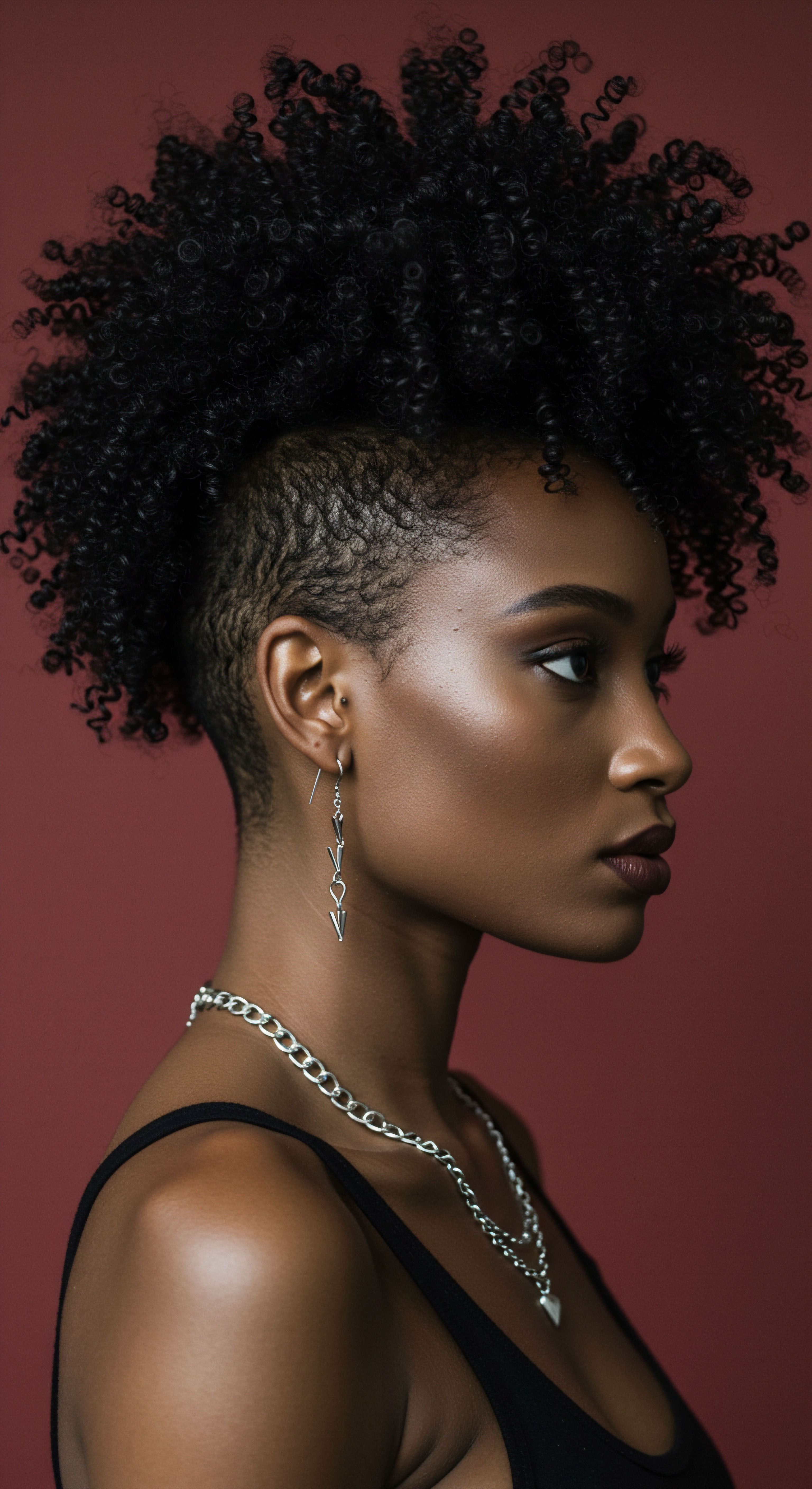
Ritual
As we move from the foundational understanding of hair’s inherent life cycle, a practical wisdom begins to unfold ❉ the deep connection between our daily rhythms, particularly our sleep, and the vitality of our coils. When the night’s quiet promise of restoration is broken, the body’s internal systems, finely tuned and interdependent, react. This reaction can manifest as a subtle, yet persistent, shift in the hair’s natural shedding pattern, inviting us to look closer at the biological rituals that govern our well-being.

How Does Restlessness Affect Hair’s Cycles?
The connection between chronic sleep disruption and increased hair shedding is not a matter of simple fatigue. Instead, it involves a complex interplay of hormonal shifts and cellular responses. When sleep is consistently inadequate or fragmented, the body perceives this as a form of stress. This perception triggers a cascade of physiological changes designed to help the body cope, but which, over time, can detrimentally affect hair follicles.
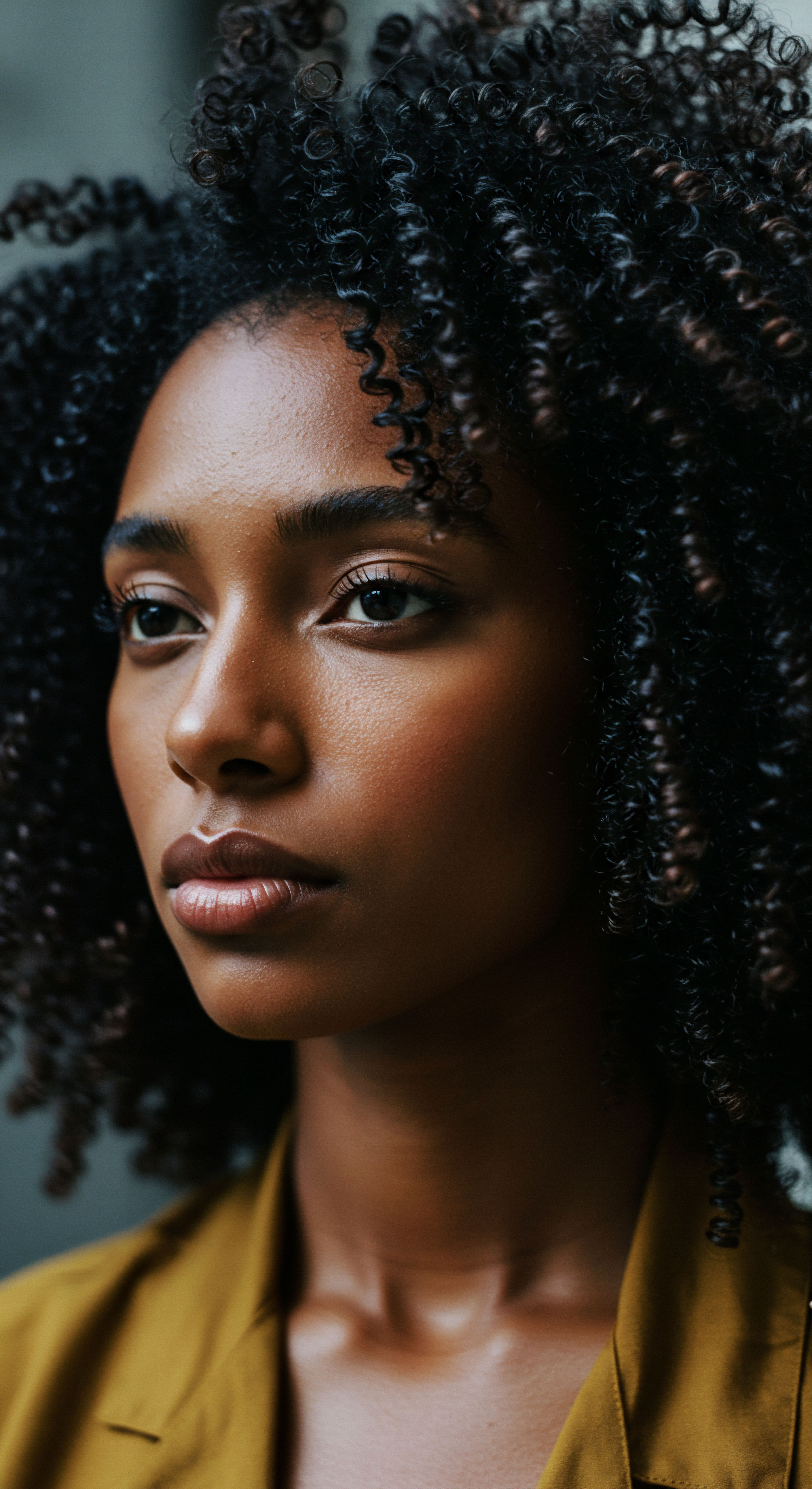
The Cortisol Cascade
One of the primary biological mechanisms linking poor sleep to hair shedding is the alteration of Cortisol Levels. Cortisol, often referred to as the “stress hormone,” is naturally higher in the mornings and decreases throughout the day, preparing the body for sleep. Chronic sleep disruption, however, can lead to persistently elevated cortisol. This sustained high level of cortisol sends signals that can prematurely push hair follicles from their active growth (anagen) phase into the resting (telogen) phase.
Chronic sleep disturbance can lead to elevated cortisol, a stress hormone, which may prematurely shift hair follicles into a resting state.
When a significant number of follicles enter the telogen phase simultaneously, the result is often increased shedding, a condition known as Telogen Effluvium. Normally, about 10-15% of hair is in the telogen phase at any given time, but stress and sleep deprivation can significantly increase this percentage, leading to noticeable hair loss. A study highlighted that when cortisol is present at high levels, it can reduce the synthesis and accelerate the degradation of important skin elements, including hyaluronan and proteoglycans, by approximately 40%. These elements are vital for the healthy environment surrounding the hair follicle, meaning their degradation can further compromise hair health.

Melatonin’s Role in Hair Growth
Beyond its well-known function in regulating sleep, Melatonin also plays a direct part in the hair growth cycle. Produced primarily in response to darkness, melatonin helps synchronize the timing of hair cycles. Hair follicles themselves contain melatonin receptors, indicating a direct influence. When sleep patterns are disturbed, melatonin production can be negatively impacted, potentially shortening the anagen phase and extending the telogen phase, thus contributing to shedding.
Melatonin’s influence extends to its antioxidant properties, which protect hair follicles from oxidative stress, a factor that can damage cells and contribute to hair loss. By helping to maintain cellular health and regulating the hair cycle, melatonin acts as a quiet guardian for our strands. When its levels are out of sync due to sleep disturbances, this protective mechanism is weakened.
The intricate dance between hormones like cortisol and melatonin, orchestrated by our sleep patterns, underscores the body’s interconnectedness. Our hair, far from being a superficial adornment, acts as a sensitive barometer for our internal state of balance.

Relay
Stepping beyond the immediate biological shifts, we confront the deeper currents that chronic sleep disruption sends through the body’s complex communication networks, ultimately impacting the very roots of our coils. This is where the subtle whispers of our internal systems become a chorus, where biological science converges with the broader landscape of our well-being, revealing how profoundly our rest shapes the health of our hair. We seek to understand the intricate relay of signals that, when interrupted, can lead to increased shedding, inviting a contemplation of our shared biological inheritance and the demands of modern life.

What Specific Cellular Signals Are Affected by Sleep Loss?
The impact of sleep deprivation on hair shedding extends to the cellular and molecular levels, involving a cascade of signaling pathways and cellular functions that are highly sensitive to the body’s overall state.

Immune System Dysregulation and Inflammation
Chronic sleep disruption can lead to a state of low-grade systemic inflammation. The immune system, which relies on a balanced circadian rhythm for optimal function, becomes dysregulated. This can result in an increase in pro-inflammatory cytokines, such as interleukin-6 (IL-6) and interleukin-1 beta (IL-1β). These inflammatory mediators can directly affect the hair follicle, potentially triggering premature entry into the catagen (transition) phase and subsequent shedding.
In conditions like Alopecia Areata, an autoimmune disorder where the immune system mistakenly attacks hair follicles, sleep disturbances are often observed. Research indicates that sleep disorders can be a predisposition factor for alopecia areata, particularly in younger individuals under 45 years of age, showing an increased risk with a hazard ratio of 1.651. This suggests a bidirectional relationship where hair loss can cause stress that impairs sleep, and impaired sleep can worsen autoimmune responses affecting hair. The sustained inflammatory environment created by chronic sleep loss can thus make hair follicles more vulnerable to damage and disrupt their normal cycle.

Growth Hormone and Prolactin Interplay
Sleep, particularly deep sleep stages, is crucial for the secretion of various hormones, including Growth Hormone (GH). GH plays a role in cell regeneration and the production of keratin, the primary protein component of hair. A reduction in GH due to sleep deprivation can therefore hinder the hair follicle’s ability to produce strong, healthy strands and maintain its active growth phase.
Another hormone influenced by sleep is Prolactin. Prolactin levels naturally peak during REM sleep and in the early morning. While prolactin is primarily known for its role in lactation, it also has receptors in hair follicles and has been shown to influence hair growth and shedding in various mammals.
Some studies suggest that elevated prolactin levels can inhibit hair growth and promote premature catagen development. Although the direct link between sleep-induced prolactin changes and human hair shedding is still being researched, disruptions in sleep patterns could indirectly affect hair through this hormonal pathway.
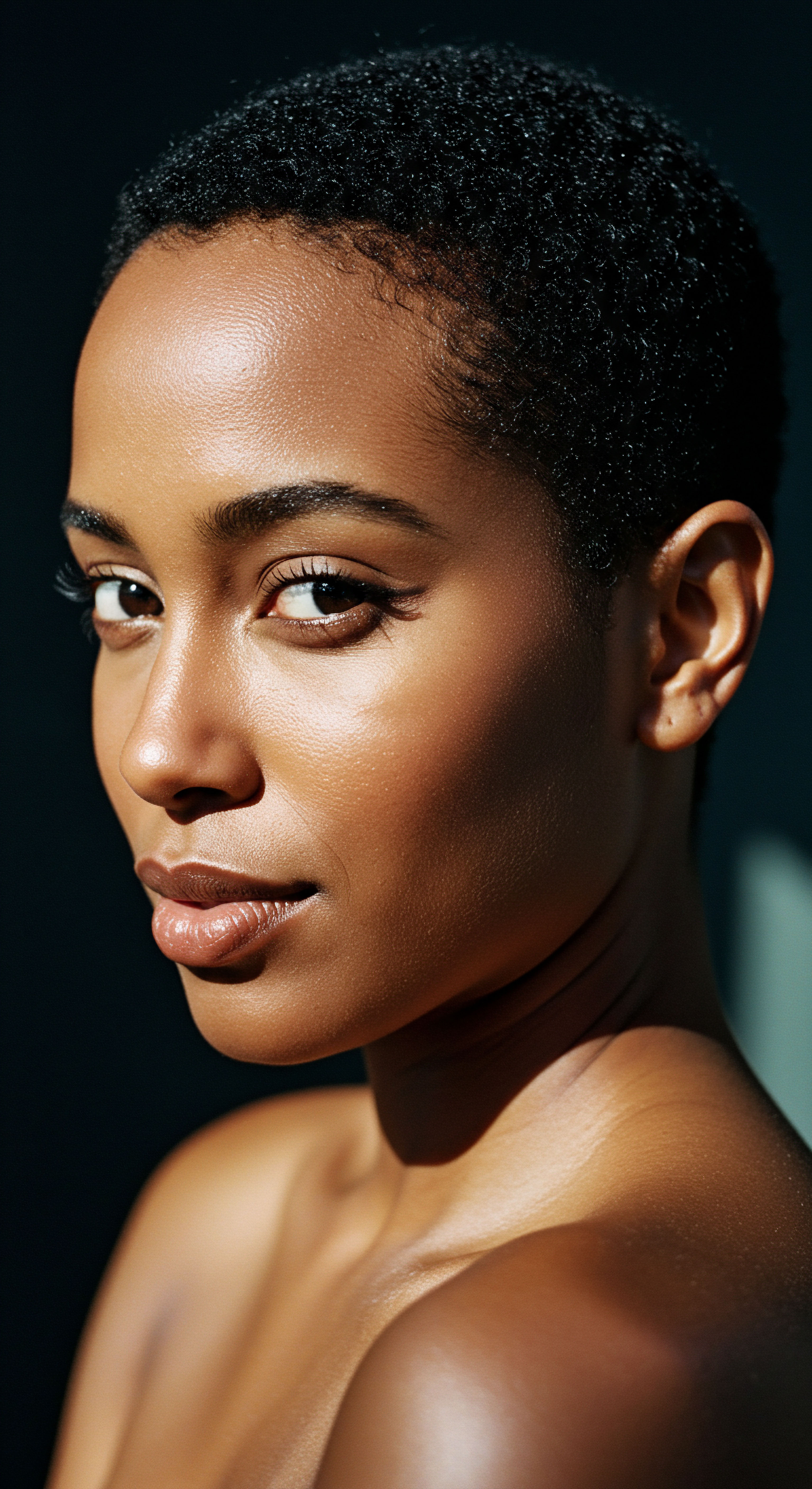
Cellular Proliferation and Oxidative Stress
The very cells that make up the hair follicle, particularly the matrix keratinocytes that divide rapidly to form the hair shaft, rely on periods of restorative sleep for optimal proliferation. Chronic sleep deprivation can impair this cellular regeneration. Moreover, it can increase Oxidative Stress within the body. Oxidative stress, an imbalance between free radicals and antioxidants, can damage cellular components, including those in hair follicles.
Melatonin, with its antioxidant properties, helps counteract this. When melatonin levels are compromised by poor sleep, the hair follicles become more susceptible to oxidative damage, further contributing to their weakening and premature shedding.
The interplay of these biological factors creates a challenging environment for hair health when sleep is consistently compromised. The body’s intricate regulatory systems, designed for balance and restoration, are thrown off kilter, and the consequences can be seen in the very strands we wear.
| Mechanism Cortisol Elevation |
| Impact on Hair Follicle Prematurely pushes follicles into telogen (resting) phase, leading to increased shedding (telogen effluvium). |
| Mechanism Melatonin Disruption |
| Impact on Hair Follicle Shortens active growth (anagen) phase, extends resting phase, and reduces antioxidant protection. |
| Mechanism Immune Dysregulation |
| Impact on Hair Follicle Increases pro-inflammatory cytokines, potentially damaging follicles and contributing to autoimmune hair loss. |
| Mechanism Growth Hormone Reduction |
| Impact on Hair Follicle Hinders cell regeneration and keratin production, leading to weaker hair and reduced growth. |
| Mechanism Prolactin Influence |
| Impact on Hair Follicle May inhibit hair growth and promote early catagen development, though human studies are still limited. |
| Mechanism Oxidative Stress |
| Impact on Hair Follicle Damages hair follicle cells, making them more vulnerable to weakening and shedding. |
| Mechanism These biological factors collectively illustrate the systemic impact of chronic sleep disruption on hair health. |
The implications for textured hair are particularly poignant. Textured hair often requires more care and attention to maintain its strength and length, and any systemic disruption that increases shedding can be particularly disheartening. The delicate balance required for these coils to thrive means that the subtle shifts caused by sleep loss can have a more pronounced visual impact.
Hair follicles, particularly those of textured hair, are sensitive barometers of systemic balance, reflecting the body’s internal state.
Consider the case of a shift worker, whose natural circadian rhythm is constantly challenged. A 2019 study in Cell Reports linked circadian rhythm disruptions, such as those experienced by shift workers, to decreased stem cell activity in hair follicles. This chronic disruption can reduce the regenerative capacity of these cells over time, potentially resulting in thinner, weaker hair.
This real-world example underscores the profound impact of sustained sleep pattern irregularities on hair biology, extending beyond temporary stress to affect the very regenerative capabilities of the follicles. The hair’s inherent ability to renew itself is challenged when its foundational rhythms are out of sync.
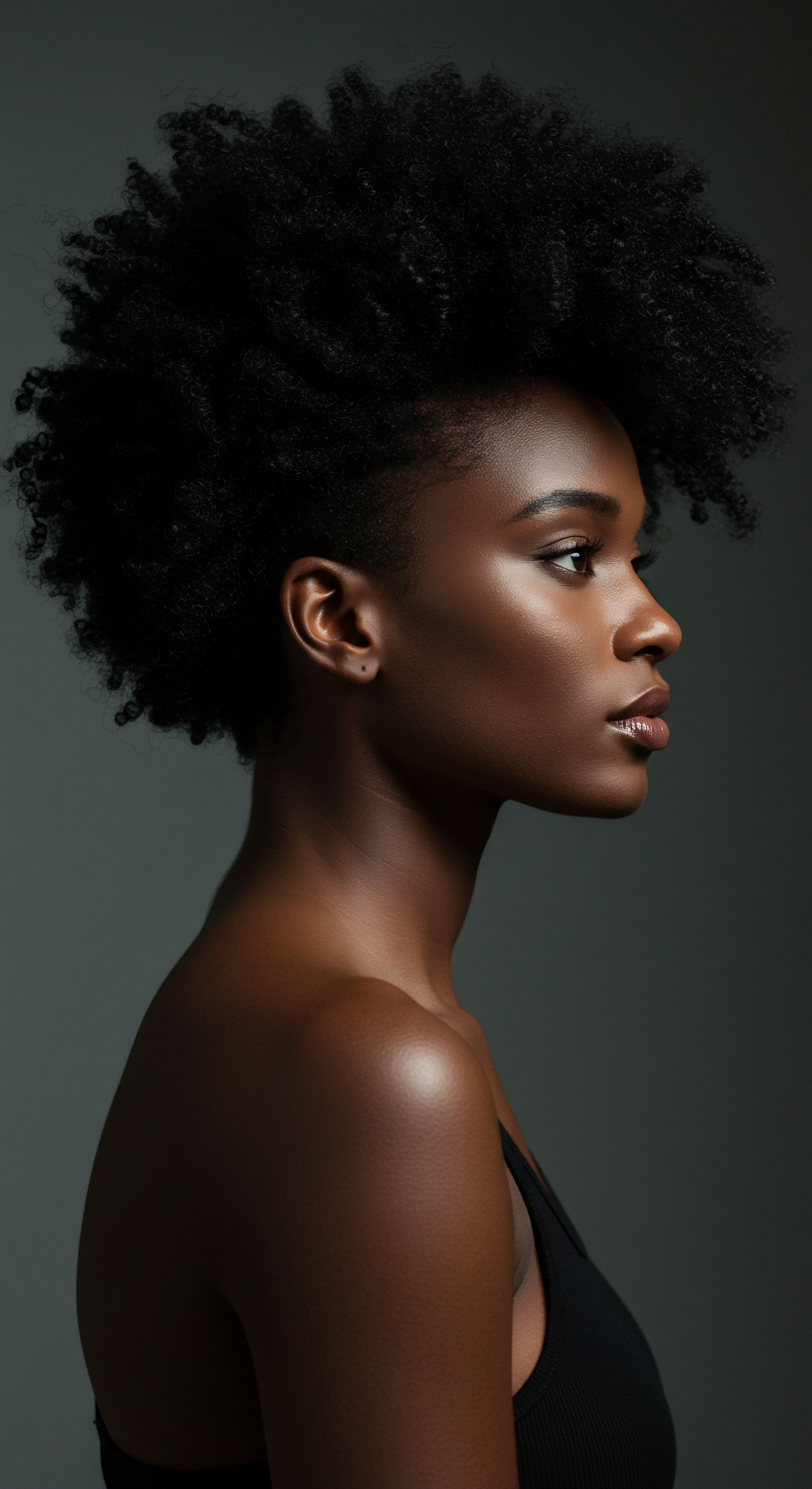
Reflection
As we close this exploration, the profound connection between the unseen rhythms of our sleep and the visible vitality of our coils stands clear. Our hair, a living expression of our inner harmony, offers a gentle reminder that true beauty extends beyond surface care, reaching into the very core of our being. Honoring our body’s deep need for restorative rest is not merely a practice of self-care, but a quiet act of reverence for the biological wisdom that guides us. May this contemplation inspire a deeper listening to the subtle signals our bodies send, fostering a gentle, knowing approach to our well-being, from root to tip.
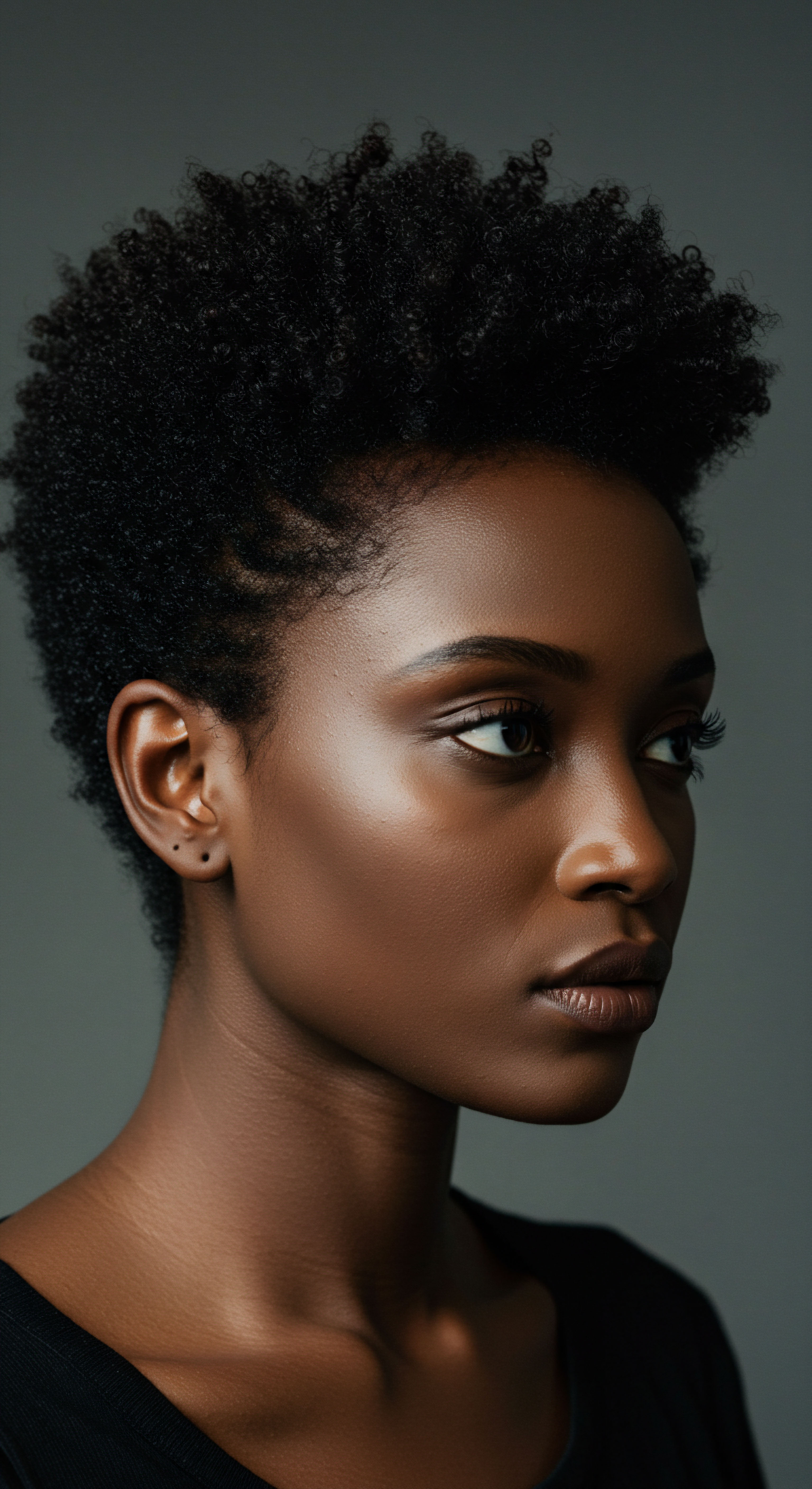
References
- Ma, X. Wang, Y. Sun, X. et al. Melatonin’s Role in Hair Follicle Growth and Development ❉ A Cashmere Goat Perspective. Animals, 2024.
- Hair Doctors. Can Lack of Sleep Make You Lose Hair? Uncovering the Connection. Hair Doctors, 2025.
- Abdollahzadeh, S. et al. Sleep disturbance in alopecia areata ❉ A cross-sectional study. Dermatologic Therapy, 2022.
- Skibinska, M. et al. Hormonal Effects on Hair Follicles. International Journal of Molecular Sciences, 2020.
- Abramson, J. & Arck, P. C. Stress and the Hair Growth Cycle ❉ Cortisol-Induced Hair Growth Disruption. Journal of Drugs in Dermatology, 2016.
- DiStefano Hair Restoration Center. Does Sleep Affect Hair Health? 2025.
- Vegamour. Inflammatory Cytokines & Hair Loss ❉ What You Should Know. Vegamour, 2022.
- Hims. Does Lack of Sleep Cause Hair Loss? The Science Explained. Good Health by Hims, 2024.
- Hårklinikken Europe. A Guide To The Hair Growth Cycle. Hårklinikken Europe, 2022.
- Kwon, O. S. et al. Sleep Disturbance and Alopecia Areata ❉ A Retrospective Cohort Study. Journal of the American Academy of Dermatology, 2018.
- Lee, Y. B. et al. Association between sleep disorders and alopecia areata in young adults ❉ A nationwide population-based study. Journal of the European Academy of Dermatology and Venereology, 2019.
- Kim, H. J. et al. Association between sleep duration and alopecia areata in adults ❉ a nationwide population-based study. Journal of the European Academy of Dermatology and Venereology, 2019.
- Oh, S. Y. et al. Association between sleep quality and hair loss in adult women ❉ a cross-sectional study. Journal of the European Academy of Dermatology and Venereology, 2020.
- Park, S. H. et al. The association between sleep duration and hair loss in adult men ❉ a nationwide population-based study. Journal of the European Academy of Dermatology and Venereology, 2020.
- Kozlowska, M. et al. The Role of Stress and Hormones in Hair Loss. Acta Dermatovenerologica Croatica, 2021.